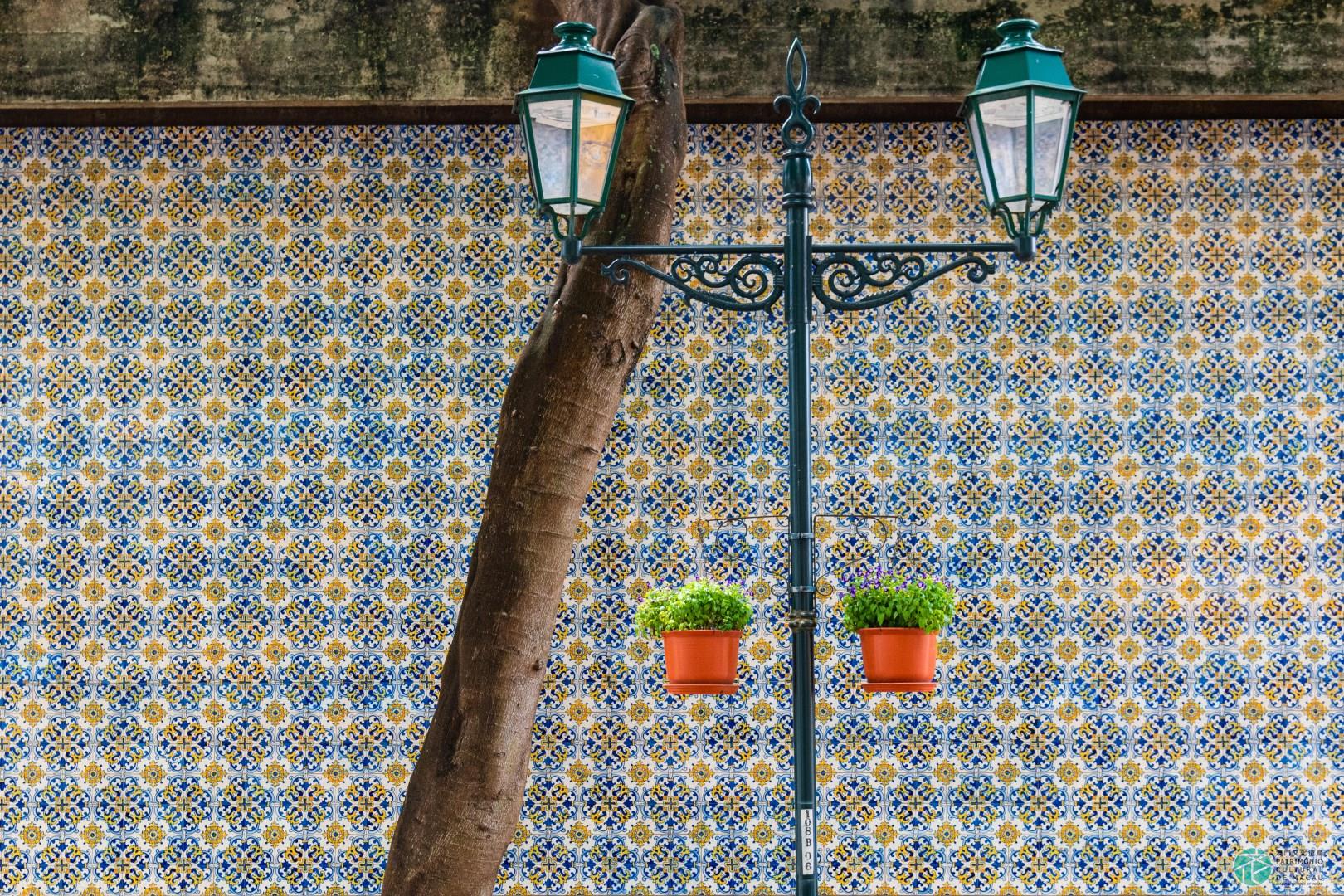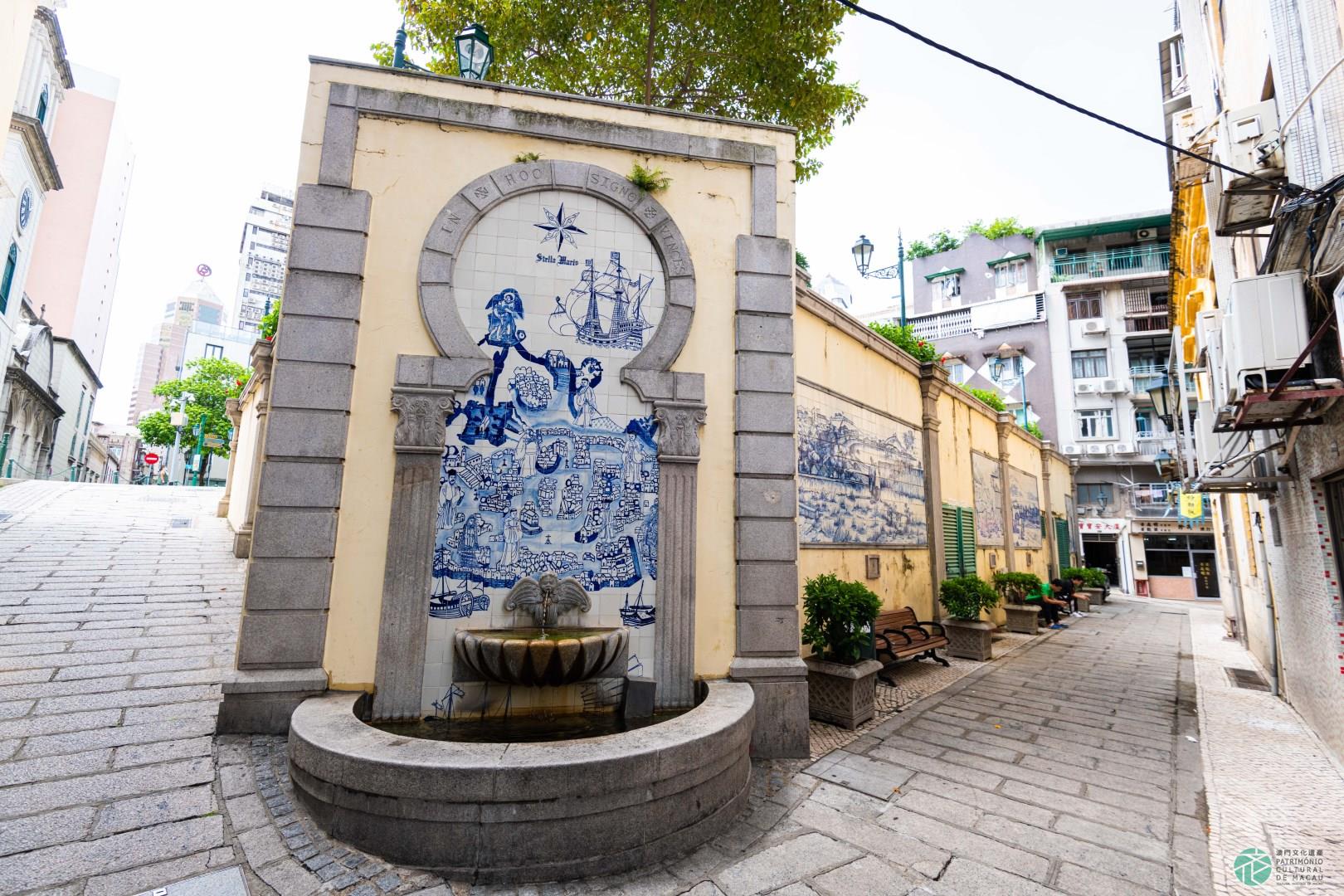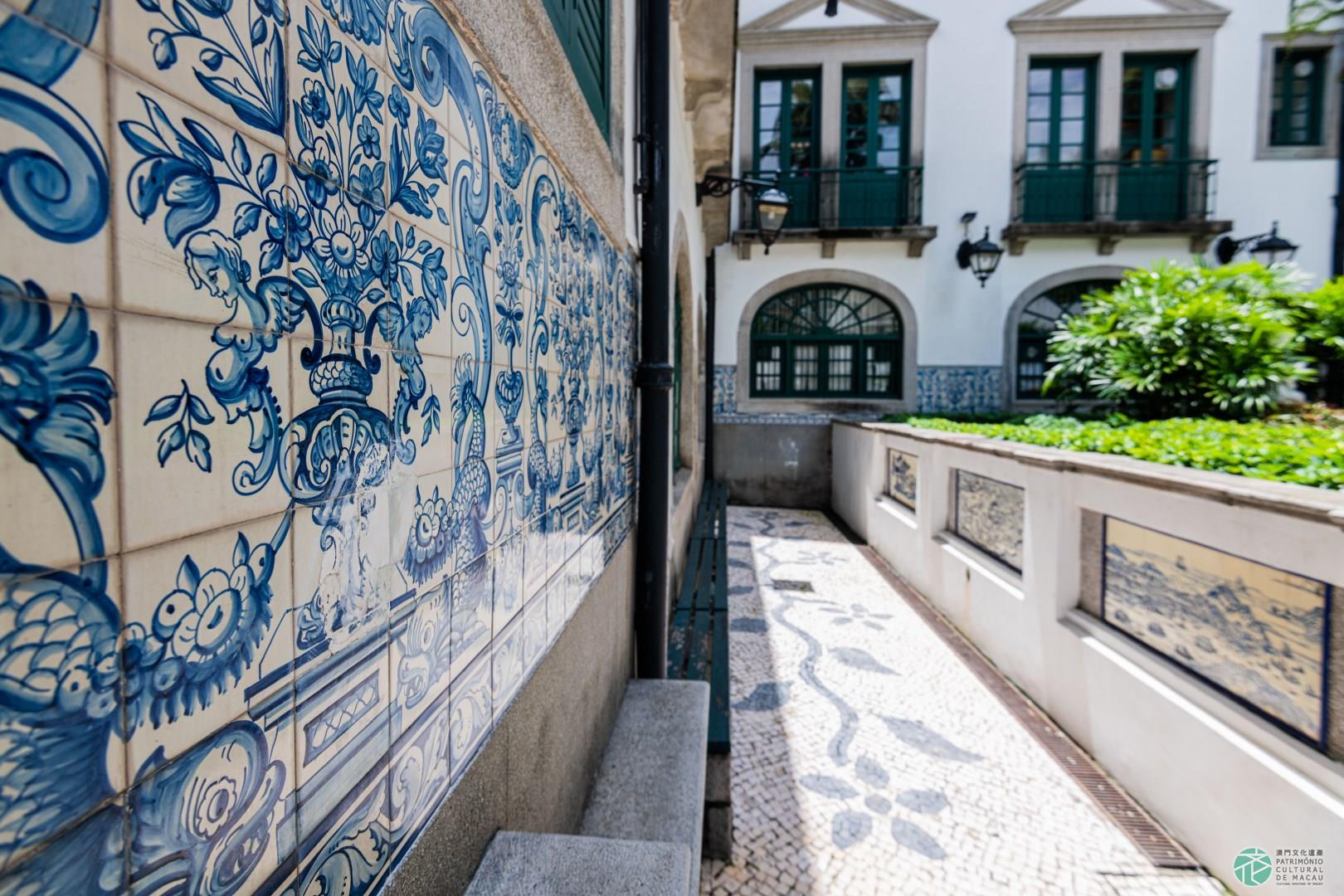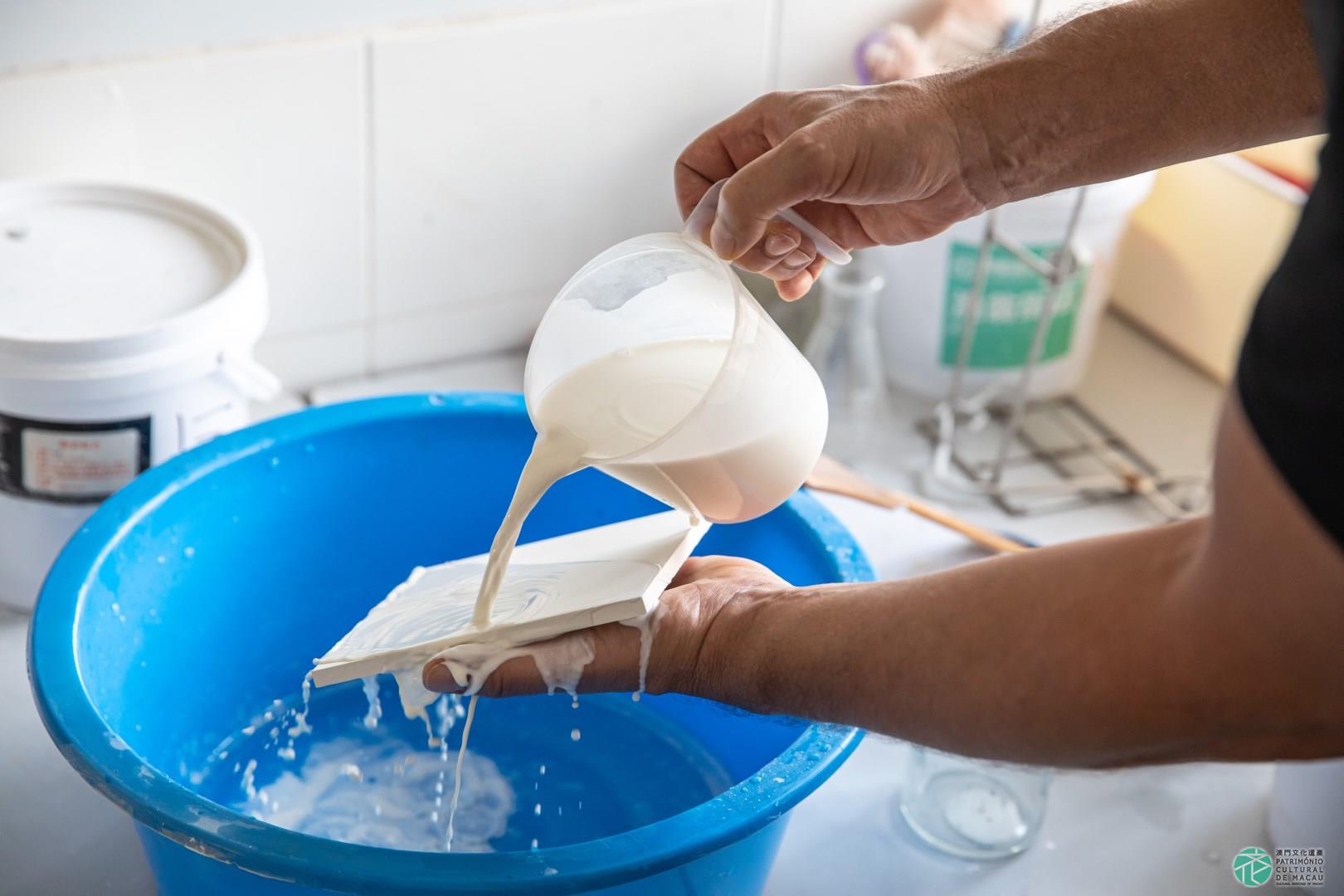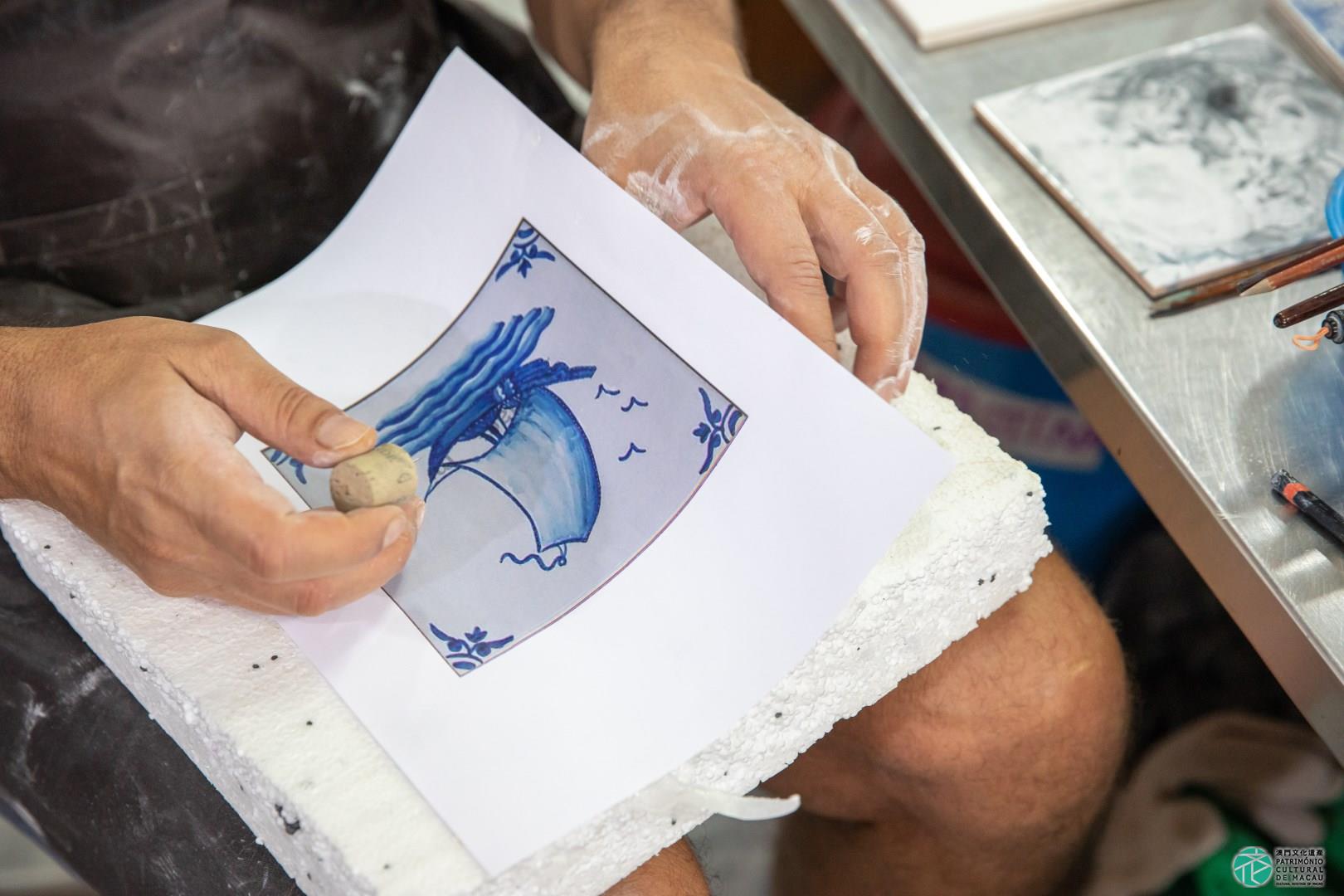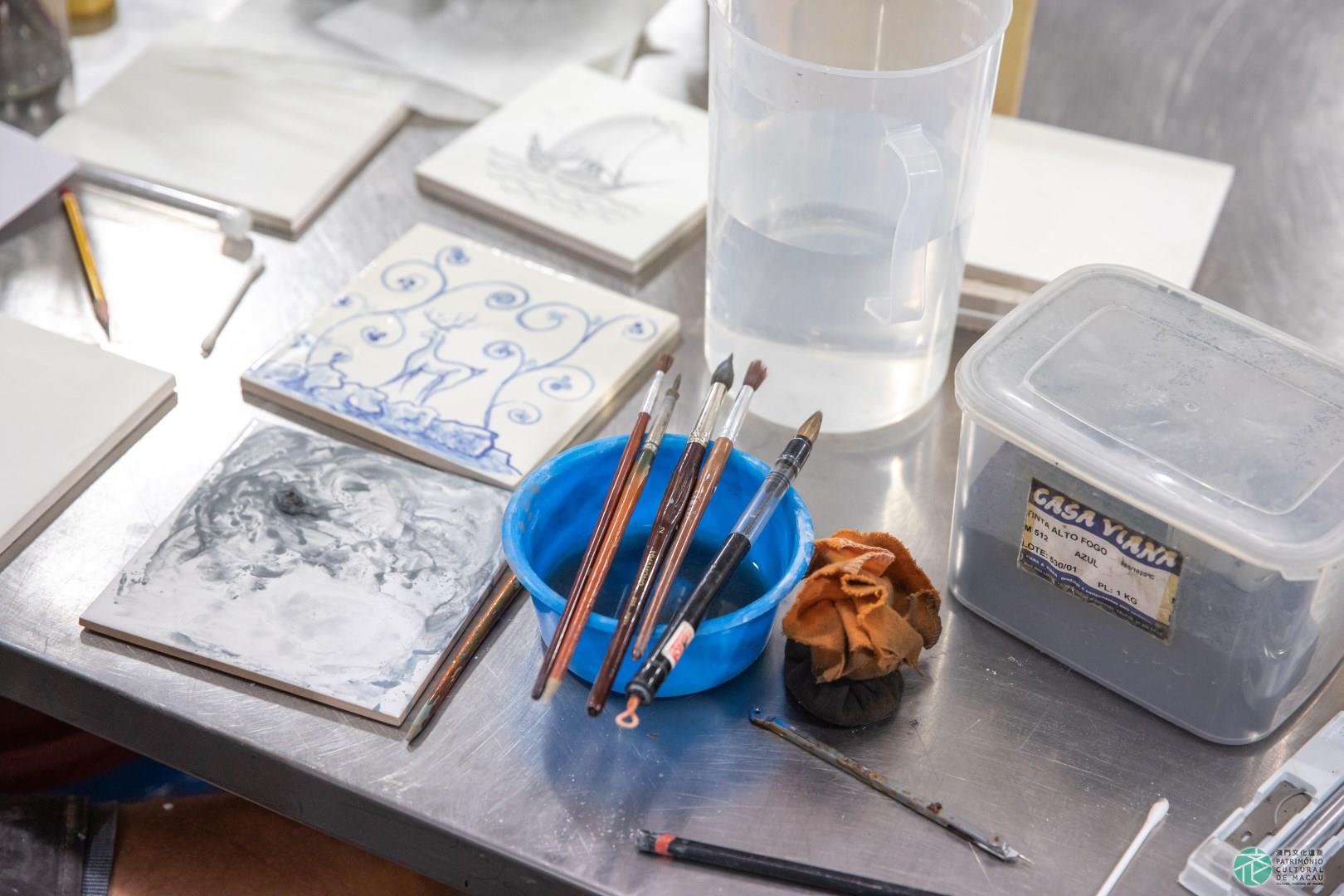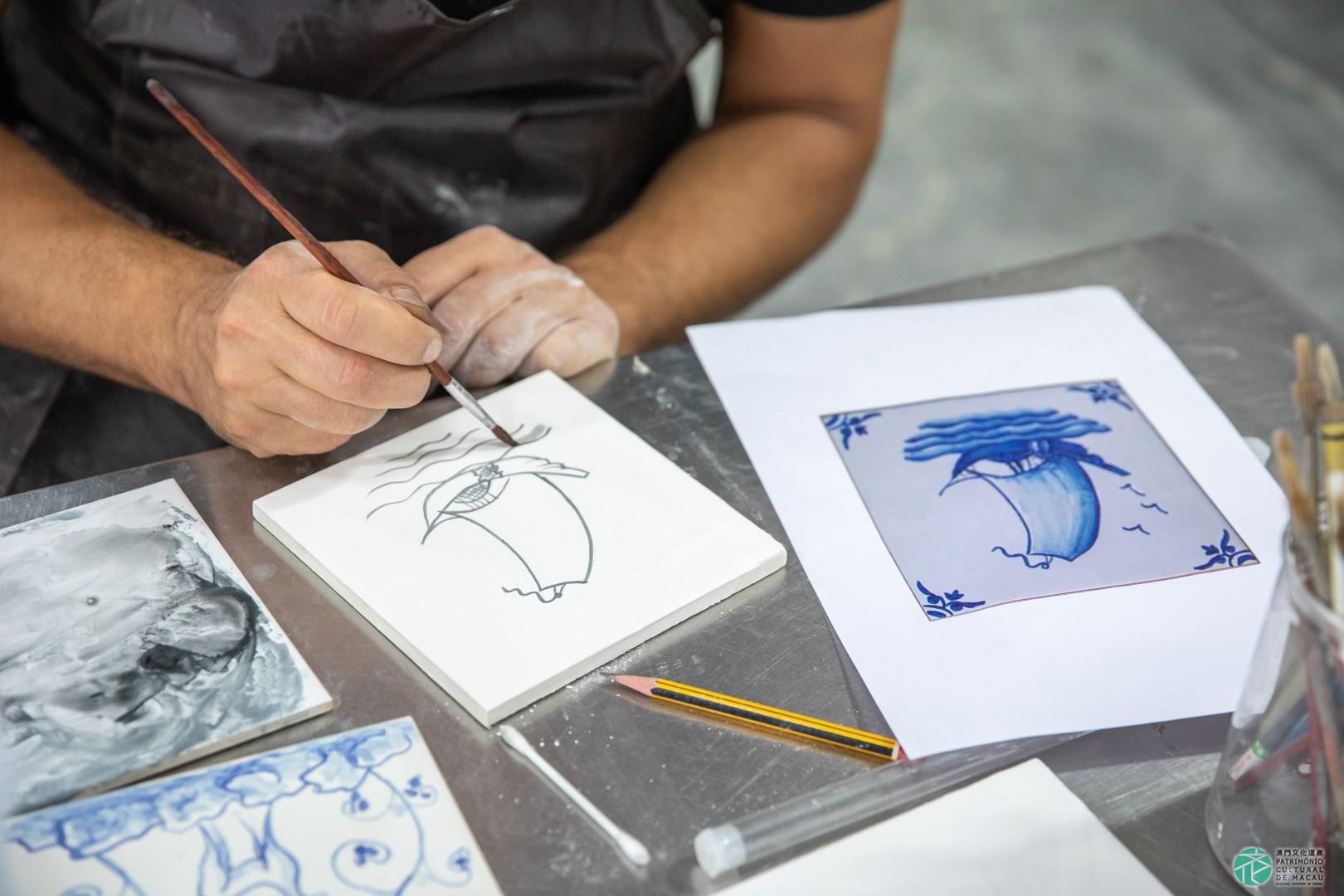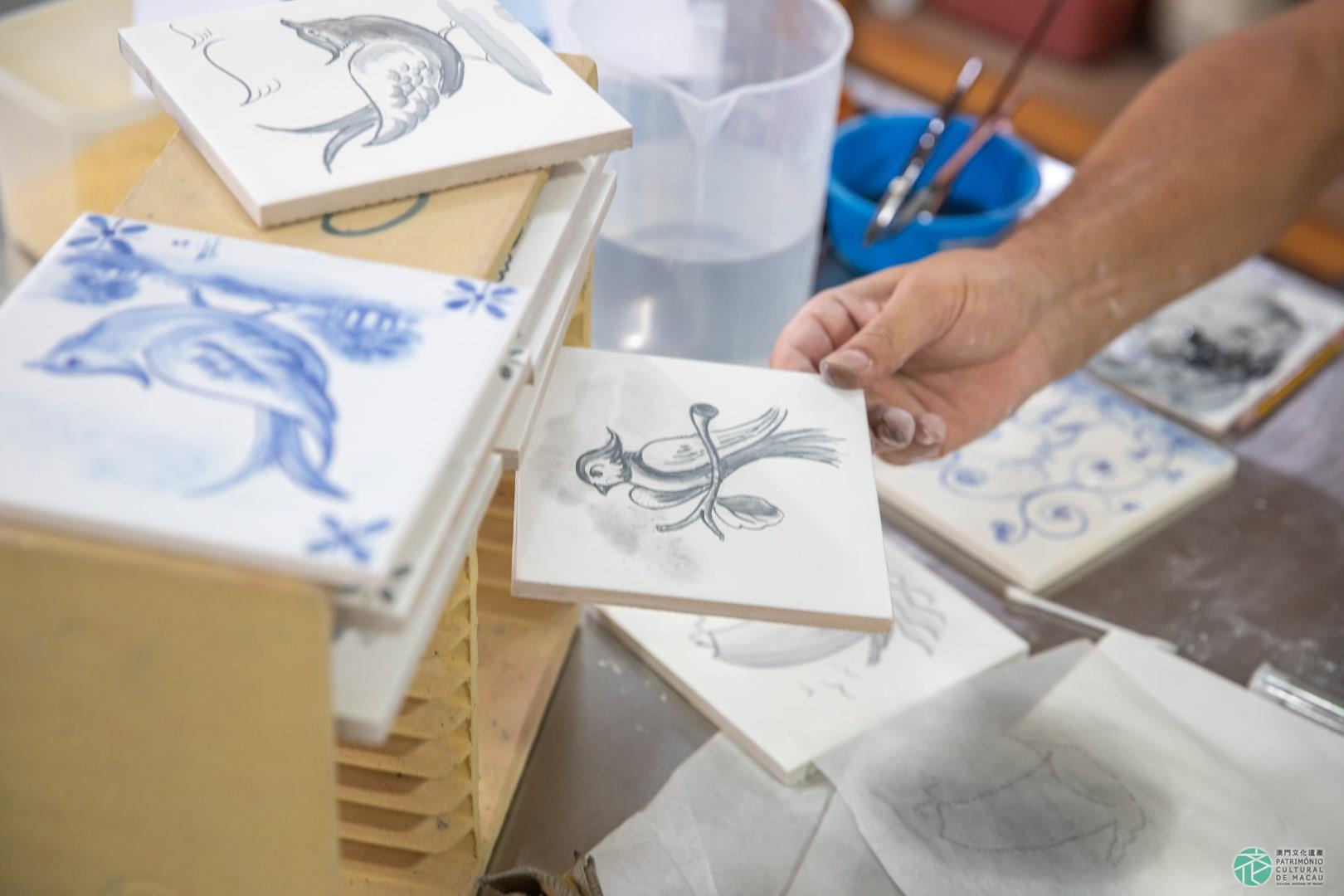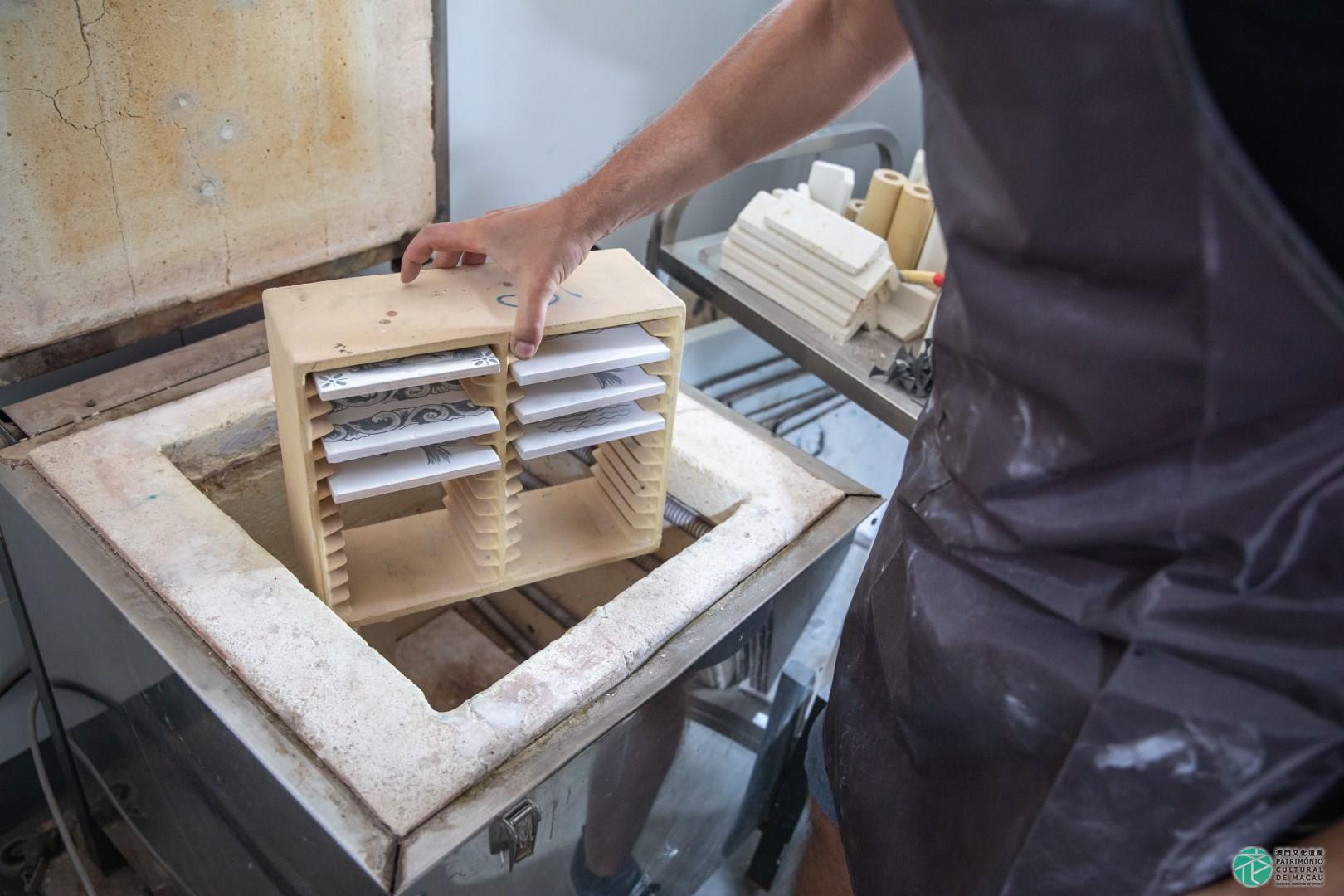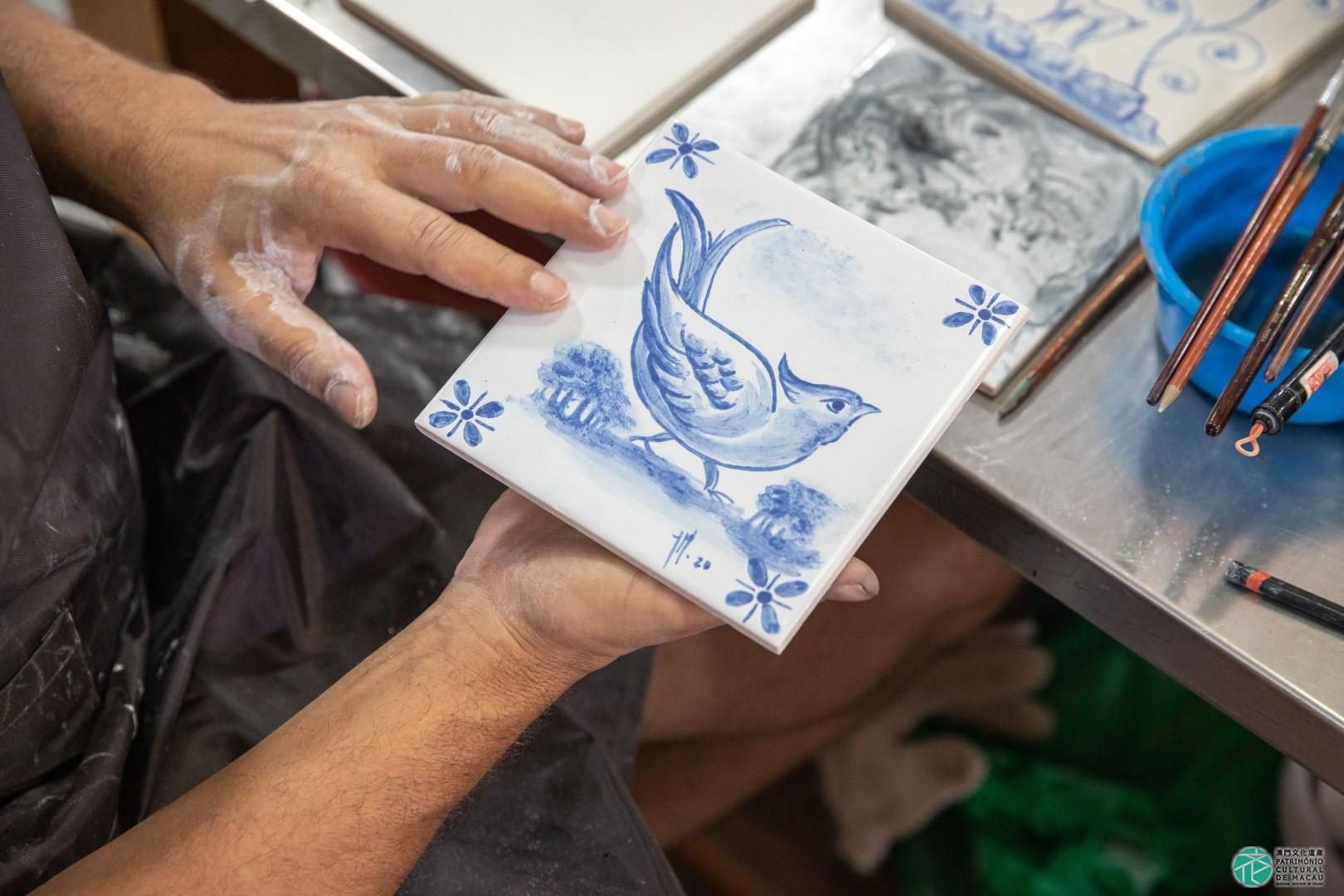Introduction:
The word azulejo is derived from the Arabic az-zulayj, meaning “small polished stones”, with its manufacturing developed by Muslims in the Middle Ages. It is a form of ceramic tile work that was later applied extensively by the Portuguese to decorate building walls, following geometric, floral and figurative motifs. By the end of the 17th century, influenced by Chinese blue-and-white porcelains, blue azulejos against a white background gained popularity and were integrated in Portuguese tile production, also depicting historic and religious themes. The manufacture and painting of Azulejo Tiles is a process that involves free-hand painting on tiles, later obtaining the glaze result by firing the tiles in kilns for 8 hours at a temperature ranging from 1,000 to 1,100 ℃, depending on the intended final color depth. The final step corresponded to the application of the tiles in a composite manner to obtain the intended conceptual patterns and images.
Conservation Status:
Influenced by Portuguese culture, Portuguese Azulejo Tiles remain very popular and can be found on street signs, churches and building walls in Macao. Some craftsmen in Macao today are still creating Portuguese Azulejo Tiles and offering azulejo workshops, noting that the elements of Portuguese Azulejo Tiles continue to be applied to local architecture and souvenir designs.
Heritage Value:
The manufacture and painting of Portuguese Azulejo Tiles is a traditional craft of Portuguese arts and culture that was also transmitted in Macao. While continuing to make use of traditional patterns and techniques, it has also incorporated many local themes and motifs. The practice of this craft is also representative of the harmonious co-existence of Chinese and Portuguese cultures in Macao. The transmission and continuity of this industry also reflects the multicultural dimension of the local community, being a good example of the diversity that exists in the decorative elements of the city’s urban spaces.
